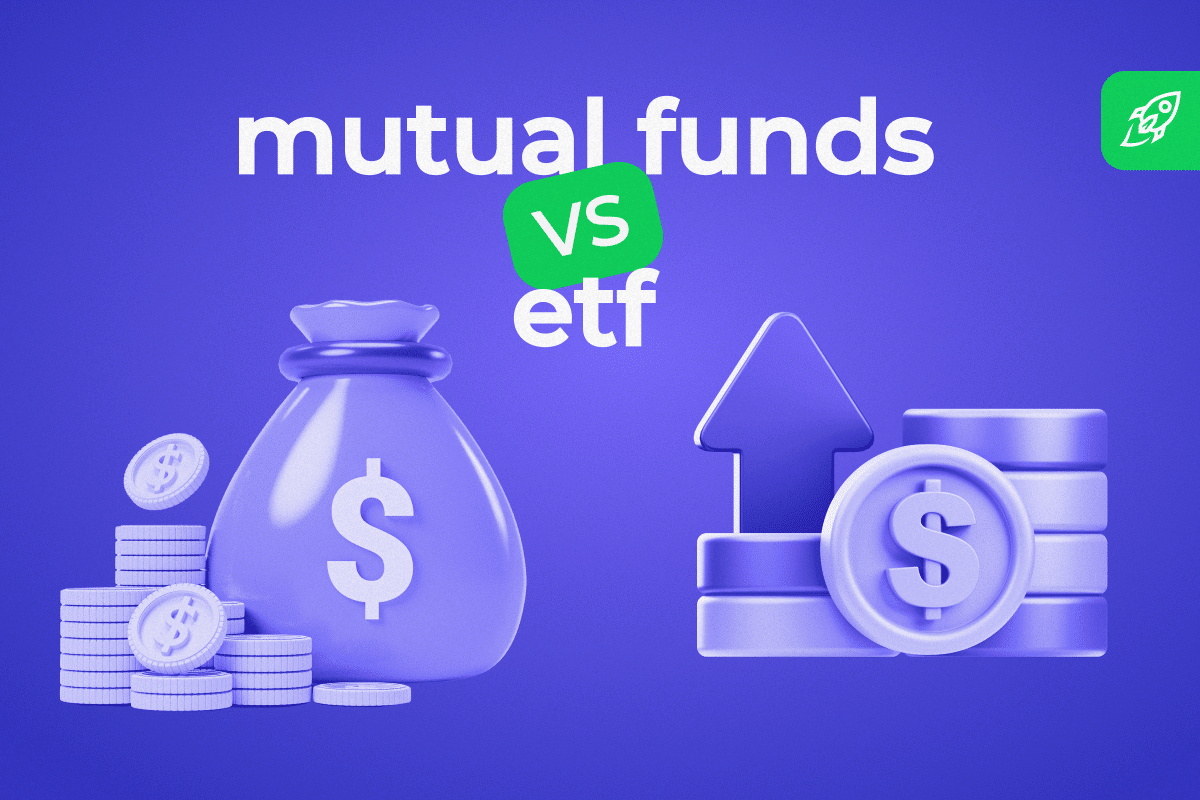
When it comes to investing, mutual funds and exchange-traded funds (ETFs) are two of the most popular options. Both offer an easy way to diversify your investments and take a more hands-off approach. But even though they share some similarities, they have important differences that could make one a better fit for your needs. In this article, we’ll take a closer look at mutual funds and ETFs, compare their benefits, and help you decide which one might be best for you.
What Are Mutual Funds?
A mutual fund is essentially a collection of money pooled from many investors. This money is then used to buy a variety of stocks, bonds, or other securities. A professional manager is responsible for choosing the investments, with the goal of growing the fund over time based on a specific strategy.
One thing to keep in mind with mutual funds is that they don’t trade throughout the day. Instead, you buy or sell shares based on the Net Asset Value (NAV), which is set at the end of each trading day. So, if you decide to make a trade during the day, you won’t know the exact price until the market closes.
Mutual funds can either be actively managed, where the manager selects investments based on research and strategy, or passively managed, where the fund just tracks a specific index, like the S&P 500.
What Are ETFs?
Exchange-traded funds (ETFs) are similar to mutual funds in that they pool money from multiple investors to buy a range of securities. The key difference is that ETFs trade on the stock market, just like individual stocks. This means you can buy and sell ETFs at any point during the day, and their price fluctuates based on supply and demand.
Most ETFs are passively managed, meaning they track an index like the S&P 500 or a particular sector, such as technology or healthcare. However, there are also some actively managed ETFs, though they are less common.
Key Differences Between Mutual Funds and ETFs
Let’s take a closer look at the main differences between mutual funds and ETFs.
1. Trading Flexibility
- Mutual Funds: You can only trade mutual fund shares at the end of the day, and you’ll get the NAV price, which is calculated after the market closes. If there’s a big market movement during the day, you won’t be able to react until after the fact.
- ETFs: ETFs, on the other hand, can be bought and sold throughout the day, just like individual stocks. Their price changes in real time based on market demand.
2. Management Style
- Mutual Funds: Mutual funds can be either actively or passively managed. Actively managed funds have a manager who picks the investments, while passively managed funds just track an index.
- ETFs: Most ETFs are passively managed and track a specific index, which keeps costs lower. However, there are some actively managed ETFs, but they tend to be less common.
3. Costs and Fees
- Mutual Funds: Actively managed mutual funds typically have higher fees because the fund manager is making decisions on the investments. These fees can range from 0.5% to 2% or more per year. Passively managed mutual funds tend to have lower fees.
- ETFs: In general, ETFs are cheaper, with fees typically under 0.5%. Since most ETFs are passively managed, they don’t require as much research or management, so the fees are lower. Keep in mind that you might pay a small commission to buy or sell an ETF, but many brokers now offer commission-free ETFs.
4. Minimum Investment
- Mutual Funds: Many mutual funds require a minimum investment, which could range from $500 to $3,000 or more. Some funds allow lower minimums if you set up automatic contributions.
- ETFs: With ETFs, there’s no minimum investment. You can buy as little as one share, making them easier to access if you're just starting to invest or don’t have a lot of money to put in.
5. Taxes
- Mutual Funds: One downside of mutual funds is that if the fund sells securities for a profit, you may have to pay taxes on those capital gains, even if you haven’t sold any shares yourself.
- ETFs: ETFs tend to be more tax-efficient because of how they are structured. Thanks to a process called "in-kind" trading, ETF investors usually don’t face capital gains taxes unless they sell their own shares.
6. Diversification
- Mutual Funds: Mutual funds can be more flexible and diverse, offering investments across various sectors, regions, and asset classes depending on the fund’s strategy.
- ETFs: ETFs also provide diversification, especially those that track broad indices like the S&P 500. Some ETFs focus on specific sectors or regions, while others invest in a wide variety of industries and countries. However, since most ETFs track an index, they might offer less flexibility compared to actively managed mutual funds.
Which One Should You Choose: Mutual Funds or ETFs?
So, which is better for you? It depends on your personal goals and investing style.
- Mutual Funds: If you prefer professional management and don’t mind paying higher fees, mutual funds could be a good option.
- ETFs: If you want lower fees, more flexibility to trade during the day, and greater tax efficiency, ETFs might be the better choice.
- New Investors: If you’re just starting out, ETFs may be a better fit because they don’t have minimum investment requirements and are easy to buy in smaller amounts.
My Final Considerations
Both mutual funds and ETFs are solid options for diversifying your investments, each with its own advantages. Mutual funds give you the benefit of professional management, while ETFs offer lower costs, tax efficiency, and the ability to trade anytime during market hours. By understanding the key differences, you can make an informed decision about which one is the best fit for your investment strategy.